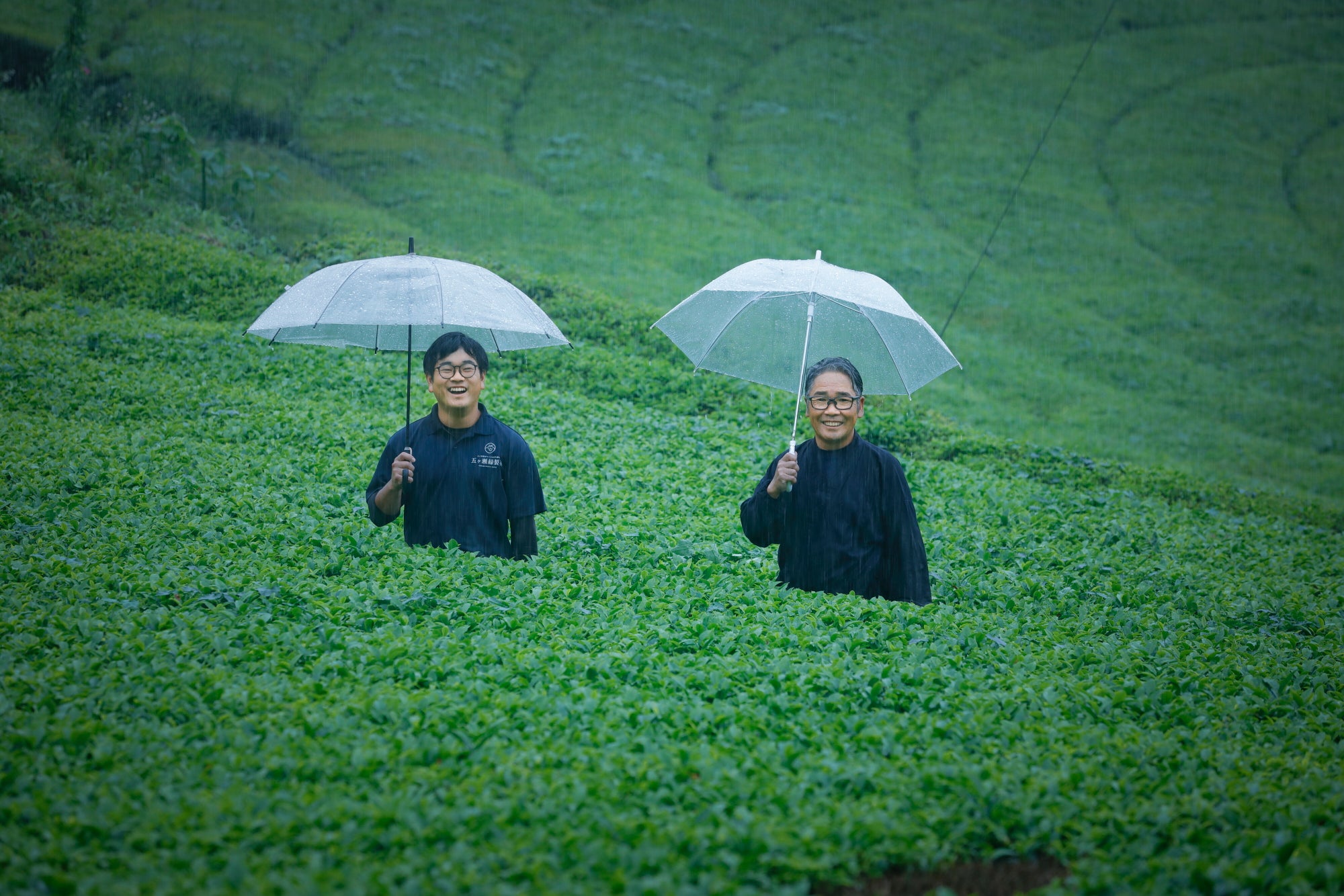Unbounded Urban Tea. Cultivation methods are given free reign to enhance the unique flavors of 17 single-origin tea varieties.
The Origin
Sayama City, Saitama
Sayama is located about an hour northwest of central Tokyo by train. Due to its access to highway and expressway, the area is lined with factories and logistics warehouses of major companies, and homes of the people who work there surround the area. Sayama tea, one of the three most famous teas in Japan along with Uji and Shizuoka teas, is grown in the green tea fields in among the urban sprawl.
The Tea Farmer

Takahiro Yokota
Yokota-san studied agricultural management and economics in Agriculture department at a famous private university. After graduation, he went on to a research lab in Shizuoka to learn about tea. After living in a dormitory as an intern for two years, he joined his family-run business, Yokota-en, which has been producing fine teas for six generations. He is an up-and-coming young tea farmer who, together with his grandfather and father, is engaged in integrated production from cultivation to tea processing, while actively collaborating with other sectors to develop products and explore new possibilities for tea.
The Tea
Okuharuka
Okuharuka was registered as a tea variety in 2015. It is a new variety that was commercialized at Yokota-en ahead of the rest of the country. Grown in soil that does not drain particularly well, but with a high nutrient retention capacity, Okuharuka possesses a fruity aroma, which is similar to that of Japanese sake. This is enhanced by the process of wilting the tea leaves, called ichō in Japanese.


The color of the tea and steeped tea leaves.

Tea leaves prior to brewing
This is the appearance of wab_sab_ tea. These visual images only tell half the story - imagining what it will taste like is also a space to be filled by the person brewing the tea. By looking at the tea leaves prior to brewing, then from the first to third infusions, and seeing how these leaves gradually open up, one can try to imagine the taste and flavor of this tea. It is ultimately something to be experienced first hand, and not something that can be found on the web.
First infusion

Second infusion

Third infusion

The Environment
An unconventional environment that does not fit the mainstream theories on tea.
The region where Sayama tea is grown is covered with clay soil called the Kanto loam layer. Unlike other tea growing areas, the land does not have particularly good drainage, but that also means nutrients are easily retained in the soil, which has become a clearly defined characteristic of Sayama tea.

Learn more about Sayama
The Birthplace of Japanese Aviation.
At the beginning of the 20th century, Japan's first airfield was established in the neighboring city of Tokorozawa, and the first ever flight in Japan took place there. Under sky echoing military aircrafts taking off from the base, peaceful tea plantations spread out across the hillsides.

Growing tea
A way to produce 17 varieties in small batch
Compared to large production areas, at Yokota-en, they able to increase the number of varieties by growing smaller allotments. This flexibility is one of the strengths of being a small tea farm. Some 17 varieties are grown at Yokota-en, including an unnamed varieties that were requested to be grown on a trial basis by the Saitama Prefectural Government Test Cultivation.

Three Generations
Thinking tea.
Grandfather, Hiroshi. Father, Yasuhiro. Grandson, Takahiro. The history of Yokota-en, run by three generations , is a history of their continued search for a way their tea can survive in these changing times.

Read stories from other farmers

Gokase Midori Tea Farm
Gokase Town, Miyazaki
Native Organic Varieties. Authentic kama-roasted tea for future generations by leveraging nature to its fullest.

Koyama Tea Farm
Ujitawara Town, Kyoto
Sustainable Tea Farming. Do no harm to people or nature.
A sustainable environment keeps tea traditions alive.

Goda Tea Farm
Yame City, Fukuoka
A Flagship Tea Grown by Umami Obsessives.Unique methods hit upon through trial and error are used to bring out umami.






